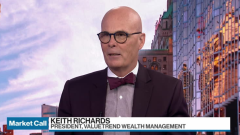Sep 27, 2023
Bank of America Says 5% 10-Year Yield Requires Sentiment Boost
, Bloomberg News

(Bloomberg) -- The 10-year Treasury yield reaching 5% depends on whether investors are convinced the economy will continue to strengthen and that the Federal Reserve will keep interest rates high for longer, researchers at Bank of America said.
Treasury yields resumed climbing Wednesday, with benchmark rates across the curve up 6 to 10 basis points. The 10-year yield rose 10 basis points to 4.64%, a fresh high from October 2007. A broad market retreat gained traction from a rally in US crude oil futures that is seen fanning inflation pressure and from bearish sentiment that the central bank will need to keep borrowing costs high for longer.
The yield on the 10-year is on the cusp of returning to a “rate dynamic of the pre-global financial crisis regime,” seen between 2004 and 2006, Bruno Braizinha wrote in a note Wednesday.
Having the benchmark that determines US fixed rate home mortgages and corporate borrowing costs reach 5% “is likely to require not only a further upgrade to fundamentals — beyond a soft landing which is still our baseline — but also a higher degree of conviction around the outlook,” Braizinha wrote.
Related: US Mortgage Rate Climbs to 22-Year High of 7.41%, Curbing Demand
That would further boost expectations for a higher Fed neutral policy rate that also “creates potential for the curve to bear-steepen and for 10-year Treasury yields to push closer to 5% levels,” Braizinha said.
A key measure of how much bond investors are compensated for holding long-term debt this week turned positive for the first time since June 2021. The Federal Reserve Bank of New York’s gauge of the 10-year term premium estimates the amount by which Treasury yields exceed the expected path of short-term rates. The guage has risen from a low of -0.6% in August, in the wake of Treasury debt sales growing more quickly than forecast and the Fed indicating policy rates will stay high well into 2024.
“The Fed is generally the main driver of term premium over the cycle,” Braizinha said. “All else being equal higher levels of supply should lead to higher term premium.”
During the 2004 to 2006 era, the difference between the term premium for the two-, and 10-year yields averaged around 40 basis points. Currently that spread is flat, and a return to the 40-basis-point area would bring the 10-year “close to the 5% level in the current context.”
While a 10-year around 4% is “closer to our baseline,” Braizinha said they “continue to recommend hedging scenarios where yields push higher.”
(Corrects typo in company name in first paragraph)
©2023 Bloomberg L.P.






